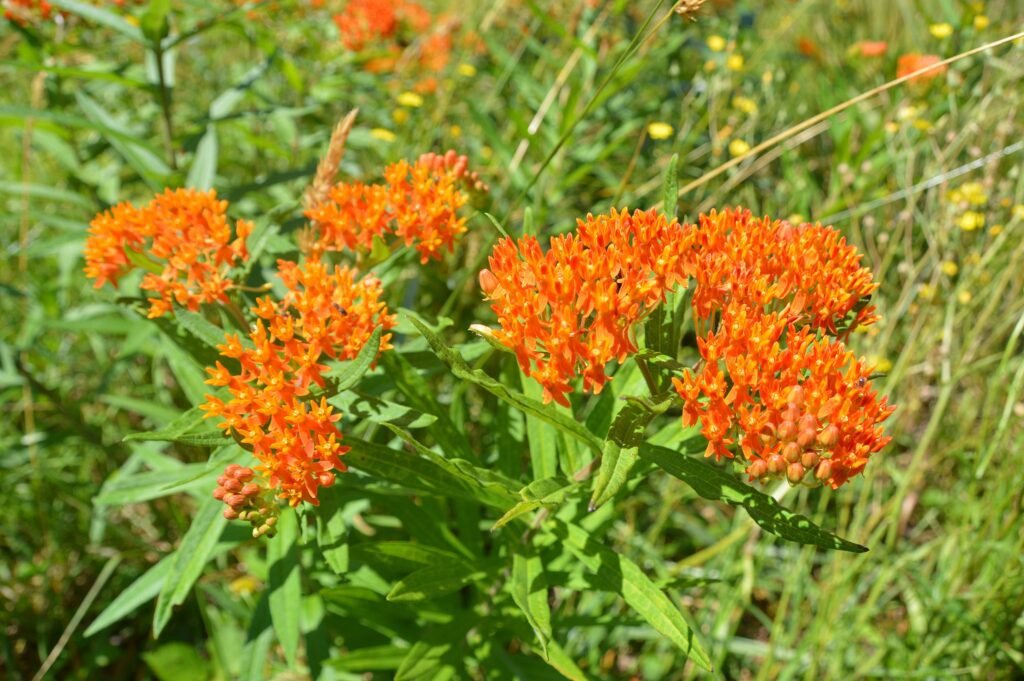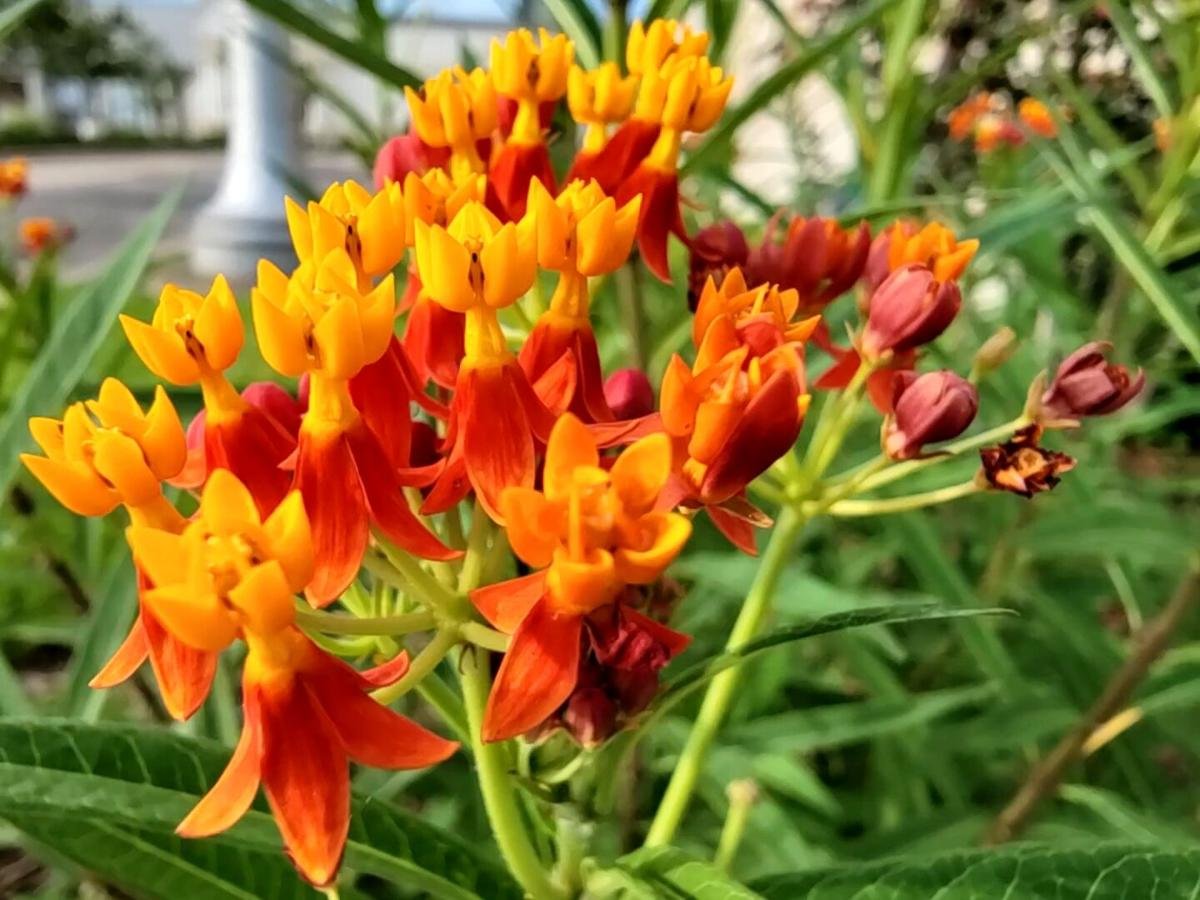About flower
Scarlet milkweed is a frost-benign evergreen shrub from the lands around the Caribbean basin. It is grown as an annual in gardens. Its plants are three to 4 feet high, and have many branches in an erect form. The leaves are willow-shaped to 5 inches long and are often affected by symptoms of feeding through a variety of insects. The stem and leaves of this plant secrete a sticky white sap that causes a rash in sensitive individuals.
Flowers are produced in multi-flowered clusters up to 4 inches across at the stem end. Each flower is about half an inch in length, with five twisted red petals and a yellow star-shaped crown (corona). The flower envelope of milkweeds consists of three whorls – the sepals first, these are mostly small and insignificant; the petals, which are usually pushed back like a comet’s tail; lastly, the spreading corona, which forms a separate coral on top of the petals.
These flowers grow during the hottest part of summer and last until frost in the fall. Pinky-shaped milkweed pods are 4 inches long. It is filled with brown seeds, which are carried on a silky parachute.
How to grow this plant
Scarlet milkweed grows best in a sunny location with average lawn soil. However, It is easy to plant in the garden, as all of our local milkweeds bloom before the first half of the summer season. And their foliage often wilts in late summer time.
Most milkweeds require full solar (at least 6 to 8 hours a day). Because they self-seed without difficulty, locate your plants in part of the lawn where you can better manipulate their rampant unfold, such as at the back of the border or in a nook. A spot that’s protected from the wind may also help save you the spread of seeds even as offering a extra hospitable environment for butterflies. It’s important to note that milkweed plant life have a taproot and do no longer transplant nicely.

The excellent soil kind for milkweed frequently relies upon on its local habitat.Swamp milkweed is an exception and calls for moist, humus-rich soil. To ensure a hit germination of milkweed seeds, plant them in a clean, clump-loose soil mattress labored to a high-quality consistency the use of a rake or rototiller. After you’ve sown the seeds, compact them into the soil (but don’t cover them) to provide correct soil-to-seed touch. Keep the planting mattress moist until the seedlings end up set up. As your plants begin to take off, skinny out any flowers that are spaced too carefully collectively so that they don’t compete for solar and soil vitamins.
pests & Disease
Milkweeds are commonly attacked by orange milkweed aphids, which congregate at the ends of branches. There they stand shoulder to shoulder like grazing cattle. Often found large orange and black milkweed plant bugs are also present feeding on the pods. None of these pests are particularly harmful to the plant, and spraying to control them is a really bad idea as it will likely poison the caterpillars.

